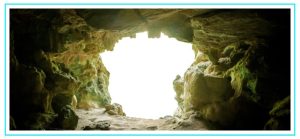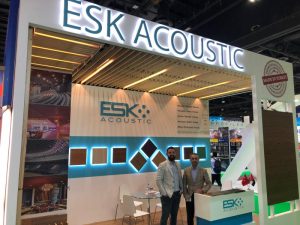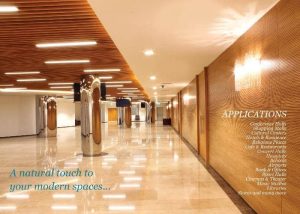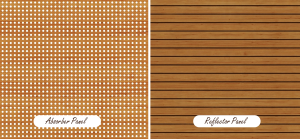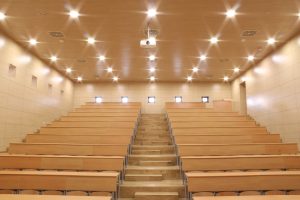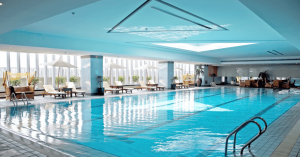Acoustic coating types are given below:
- Acoustic fabric covered panel
- Three-dimensional acoustic wall covering
- Acoustic ceiling covering
- Acoustic table coating
- Acoustic separator screen
Acoustic coating types; It can be fixed by hanging on the ceiling, mounted on the wall or by sticking method. When the paper of self-adhesive fabric panels is removed, direct bonding can be done. Acoustic coating; It is a method applied to ensure the insulation and volume of sound. Although it varies according to the material and type; Acoustic coating can be used on the ceiling, wall and floor. While balancing the sound in the environment, it also has a positive effect on the decoration. It is preferred in environments such as meeting rooms, offices, cinemas, radio rooms, studios.
Fabric Coated Panel from Acoustic Cladding Types
There is glass wool inside the fabric covered panel. It provides sound insulation and insulation in this way. It also prevents echo problems. In addition to its sound absorbing feature, the fact that the front surface is resistant to impact creates an advantage for the user. It is a type of acoustic coating that is mostly preferred on walls. However, efficiency can be obtained when used in ceiling applications. It is a decorative product besides its function, as it can be produced in different colors and shapes.
Three Dimensional Acoustic Wall Cladding
3D acoustic wall panels are preferred because of their decorative appearance. In addition to providing ambient acoustics, it can be designed in different ways with different models and shapes. Ambient acoustics are achieved by using the same product as the fabric-covered panel. The main material providing sound absorption is glass wool. A three-dimensional image can be given by producing the desired size and thickness.
Acoustic Ceiling Coatings
Ceiling coatings are a coating used to reduce both hum and reverberation in large-scale environments. Ceiling coverings, which are among the acoustic coating types, are mostly used in offices, museums, lobbies and conference halls. It is preferred to be used in places with high ceilings. When it is desired to benefit from ceiling coverings in terms of decoration, it can be hung horizontally.
While acoustic coating is made with suspended ceiling panels, the open installation can also be hidden. In this way, sound acoustics can be provided in the space, and in addition, a decorative image can be created and visual pollution can be prevented. It is a type of acoustic coating with high fire resistance and moisture resistance.
Acoustic Table Coverings
When the table coverings are made with acoustic sound absorbing fabric, noise is prevented. Especially in call centers and offices, the noise is high and the working pace is high. Acoustic sound absorbing fabric can be mounted on the tables to prevent the spread of noise. It is a fabric that can be easily mounted on the table. It is a fabric with both front and back surfaces resistant to impact and has the ability to provide sound insulation. It is an acoustic sound absorbing fabric that is not easily deformed because of its high durability. For this reason, it is possible to be preferred as a note holder in environments such as offices. No deformation is observed in the fabric when a note is attached with a pin.
Acoustic Partition Screen Making
Acoustic front; It is a product made by using sheets in addition to fabrics that have sound absorbing properties. It is obtained by fitting glass wool plates into aluminum profiles. Since it can be purchased with different color options, it can be easily adapted to the decoration of the area to be used. At the same time, it is possible to make it to the desired extent and thus obtain more efficiency in the environment.
The separator screen, one of the acoustic coating types; It is used to reduce the noise in large environments with intense noise. It can also provide air circulation. It can be used mostly in offices or call centers as it balances the sound acoustics.
